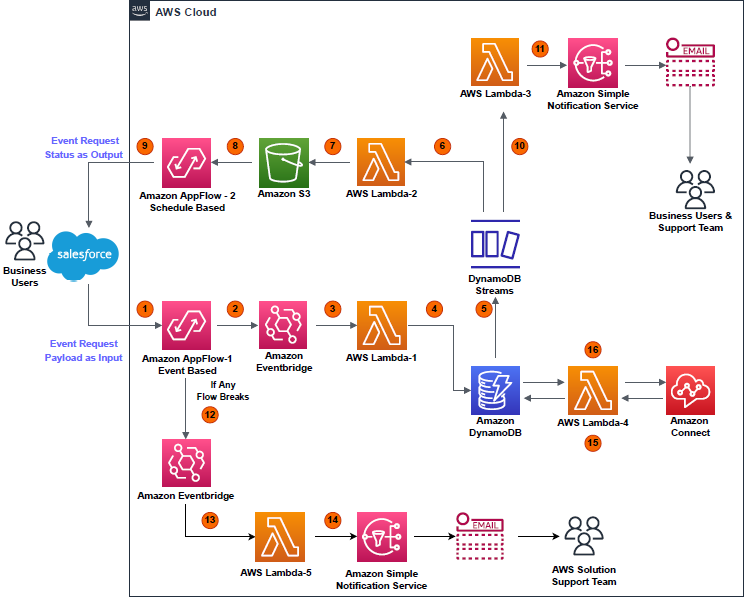AWS Architecture Blog
Category: Architecture
Author Spotlight: Lewis Tang, Senior Partner Solution Architect in Transformation and Modernization
The Author Spotlight series pulls back the curtain on some of AWS’s most prolific authors. Read on to find out more about our very own Lewis Tang’s journey, in his own words! I have been a Senior Partner Solution Architect since joining Amazon Web Services (AWS) in 2019. What I really enjoy about this role […]
Deploying IBM Cloud Pak for Data on Red Hat OpenShift Service on AWS
Amazon Web Services (AWS) customers who are looking for a more intuitive way to deploy and use IBM Cloud Pak for Data (CP4D) on the AWS Cloud, can now use the Red Hat OpenShift Service on AWS (ROSA). ROSA is a fully managed service, jointly supported by AWS and Red Hat. It is managed by […]
Setup a high availability design for Oracle Data Guard (Fast-Start Failover) using Amazon Route 53
Many customers use Oracle Database deployed on Amazon Elastic Compute Cloud (Amazon EC2) to run their Oracle E-Business Suite applications. They rely on Oracle Data Guard for high availability databases, with a standby database running in a different availability zone. Oracle Data Guard can switch a standby database to the primary role in case a […]
Let’s Architect! Modern data architectures
With the rapid growth in data coming from data platforms and applications, and the continuous improvements in state-of-the-art machine learning algorithms, data are becoming key assets for companies. Modern data architectures include data mesh—a recent style that represents a paradigm shift, in which data is treated as a product and data architectures are designed around […]
A multi-dimensional approach helps you proactively prepare for failures, Part 3: Operations and process resiliency
In Part 1 and Part 2 of this series, we discussed how to build application layer and infrastructure layer resiliency. In Part 3, we explore how to develop resilient applications, and the need to test and break our operational processes and run books. Processes are needed to capture baseline metrics and boundary conditions. Detecting deviations […]
Integrating Salesforce with AWS DynamoDB using Amazon AppFlow bi-directionally
In this blog post, we demonstrate how to integrate Salesforce Lightning with Amazon DynamoDB by using Amazon AppFlow and Amazon EventBridge services bi-directionally. This is an event-driven, serverless-based microservice, allowing Salesforce users to update configuration data stored in DynamoDB tables without giving AWS account access from AWS Command Line Interface or AWS Management Console. This […]
A multi-dimensional approach helps you proactively prepare for failures, Part 2: Infrastructure layer
Distributed applications resiliency is a cumulative resiliency of applications, infrastructure, and operational processes. Part 1 of this series explored application layer resiliency. In Part 2, we discuss how using Amazon Web Services (AWS) managed services, redundancy, high availability, and infrastructure failover patterns based on recovery time and point objectives (RTO and RPO, respectively) can help in […]
Let’s Architect! Architecting for the edge
Edge computing comprises elements of geography and networking and brings computing closer to the end users of the application. For example, using a content delivery network (CDN) such as AWS CloudFront can help video streaming providers reduce latency for distributing their material by taking advantage of caching at the edge. Another example might look like […]
Extending your SaaS platform with AWS Lambda
Software as a service (SaaS) providers continuously add new features and capabilities to their products to meet their growing customer needs. As enterprises adopt SaaS to reduce the total cost of ownership and focus on business priorities, they expect SaaS providers to enable customization capabilities. Many SaaS providers allow their customers (tenants) to provide customer-specific […]
Sequence Diagrams enrich your understanding of distributed architectures
Architecture diagrams visually communicate and document the high-level design of a solution. As the level of detail increases, so does the diagram’s size, density, and layout complexity. Using Sequence Diagrams, you can explore additional usage scenarios and enrich your understanding of the distributed architecture while continuing to communicate visually. This post takes a sample architecture […]








